|
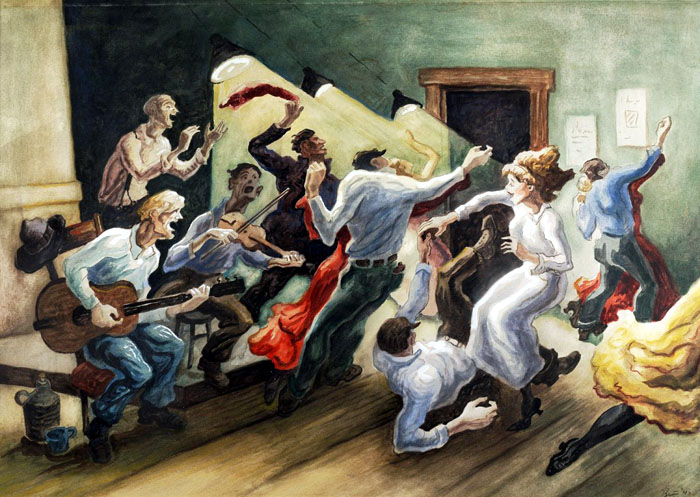
Retrograde
periods are like this Thomas Hart Benton hoedown -- they
can
send you into a swirl or take you down...
By
John Townley
Awhile
back, we compared
the periodic retrograde motion of
the planets to breathing tides,
the
ebb and flow of forward motion that creeps up, falls back a bit, then
creeps
yet farther up like waves on a rising tide. That’s a nice
metaphor, but what is
it that actually, physically happens to produce the tensions (or
disruption of
tensions) between the planets that retrograde periods clearly
demonstrate in
their effects on earth?
Actually,
as it turns out,
wave interaction may be not just
a metaphor for what happens but the actual event itself. But to
investigate
that possibility, it’s important to know when retrograde
motion
occurs in the
scheme of things.
For
planets outside our
orbit (Mars and out), retrograde
motion occurs when we (Earth) get on the same side of the Sun as
another planet
and begin to catch up with it, so to speak. Since our orbit is smaller
and we
complete it more quickly, at a specific point (depending on our
distance from
the outer planet) we’re moving so fast it appears the other
planet is moving
backwards in comparison with the sky background. The same thing happens
when
you overtake another car on the road, if you’re on the inside
of
a circular
track, where the inside track usually overtakes the outside. To extend
the
automotive image, we “leave ‘em in the dust, like
they’re going in reverse”.
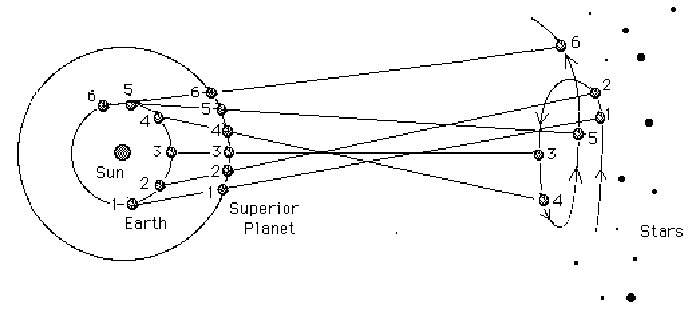
As
we approach and
pass an outer (superior) planet, it appears to move backwards against
the deep sky.
For some animated examples, watch outer Mars
retro, inner Mercury retro,
or the whole, swirling geocentric
dance
For
planets inside our orbit (Mercury and Venus), it’s they
who overtake us periodically when we are both on the same side of the
Sun and
for a brief time they
seem like they
are moving backwards. Actually, in both cases, each planet seems to be
going
backwards from the other’s point of view in relation to the
perceived
background. The same happens with cars on that circular track
–
each seems to
be going backward against the background (which for one is on the same
side of
the track, and for the other the opposite side of the track –
it
doesn’t work
that way for two cars moving in a straight line).
The
difference is: the apparent retrograde motion of the outer
viewed from the inner is the same in real time but proportionately
different in
relation to the length of each planet’s year. From
Earth’s
point of view,
Jupiter is retrograde once a year (our year) for about 1/3 of our year.
From
Jupiter’s point of view, Earth regularly goes retro 11-12
times
in its year,
but for relatively brief parts of its year. In real time, however, they
total
up the same (1/3 of the total time).
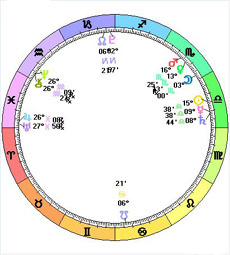 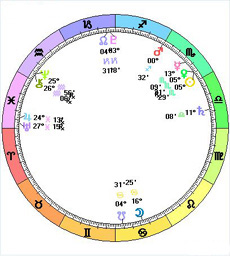 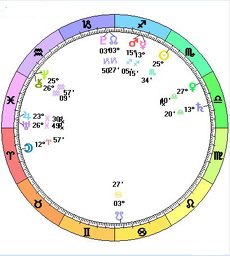
In geocentric view
of recent Venus retro, apparent reversal begins and ends with Venus
nearly thirty degrees from the Sun
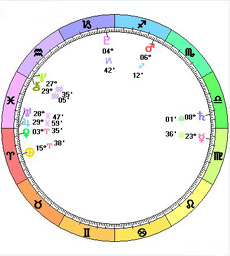 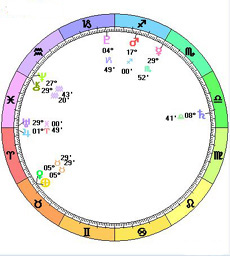 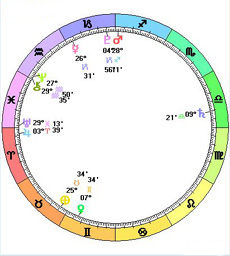
In
heliocentric
view of same dates, it happens on only a twelve degree
separation.
Well, as
dizzying as that seems, it still just describes the
relative positions of the planets (Earth and any other) and the visual
view
from each, not their interactive physical dynamics – which is
where the waves
come in. The wave we want to look at is actually described by the
distance
between the planets and whether they are closing in or drawing away
from each
other. It’s a gravitational pressure wave, and it’s
real
and strong – so strong
that it changes (perturbs) the orbits of both planets as they pass each
other. As
they draw together (from the time they are on opposite sides of the Sun
to the
time they are closest, lined up, with the Sun opposite both) they are
in
relative free fall, or as close to it as their bound orbits allow.
After their
closest approach, the inner begins to pull away from the outer,
increasing the
gravitational tension between them. The heart of the period of
retrograde
motion (heliocentric conjunction) marks that switch in pressure, from
decreasing to increasing, just like an
acoustic pressure wave at its trough, or bottom. This is where, from
the
point of view of the inner planet, the outer planet is opposite the
Sun, and
from the point of view of the outer planet, when the inner planet is
conjunct
the Sun. For both, it is the bottom of the “exhale”
period,
where the least
pressure applies, but also a point of instability (aligned with the L1 and L2
points)
and change.
In
this very physical
view, the retrograde station of a planet is a marker – like a
tape cordon
around a crime scene – indicating that an unstable period in
that
area is
cutting in, so tread with care. Hey, when you’re looking at
someone and
suddenly the rest of the world starts to move backwards around you
both, any
fool would take warning that something is in the wind. And, the direct
station
is the other side of that crime scene, after the fact, announcing
business as
usual is returning. The shadow periods are precursors and exit
indicators even farther away from
the event.
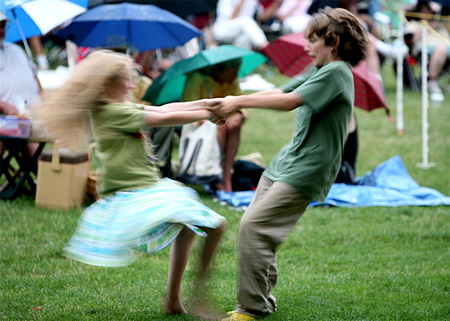 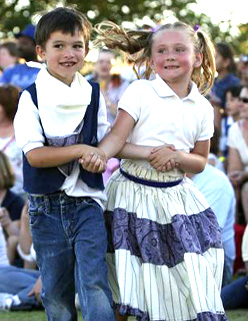
After you
"swing your partner" (l) in a dizzy retro twirl, you should come out
into an easy "promenade" (r)
So what
is the totality of the event itself, physically? It’s simply
a
rhythmic pulse, when the planets involved turn the beat around, so
you’d better
be ready to step lively and dance accordingly. The retrograde moment is
when
the caller announces “Swing your partner!” and you
know
you’re moving into a spin, as the background swirls dizzily
around you. Follow it gracefully and
knowingly, make your turn at the bottom, and when the caller cries
“Promenade!”
at the direct station, you’ll be on your way, in tune with
the
music and at one
with the dance.
Looked at
this way, a retrograde period is both a breather
(like an ebbing wave or tide) and a call to get more engaged in the
intricacies of life’s choreography, so you swing through and
then
out of it with an accomplished,
showy spin and don’t simply trip over your feet because you
weren't paying
attention…
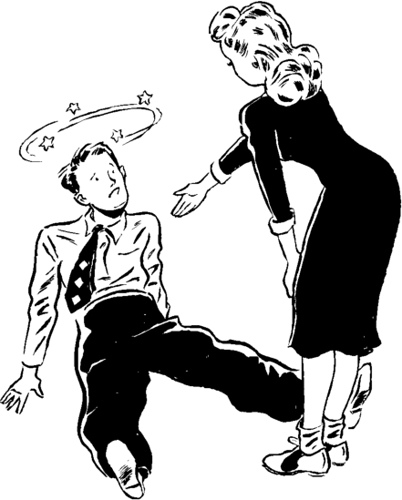
Not
a
newsletter subscriber already? Subscribe
Free Here!
--
Breaking news from
around the globe, plus articles, reviews, it's all happening there,
changes daily...
|

